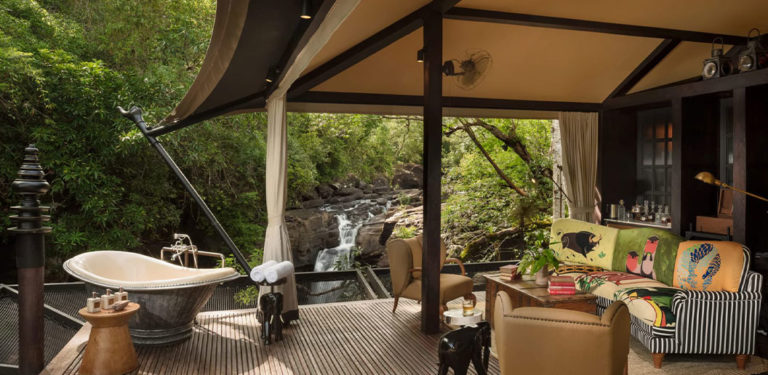Deep in Cambodia’s southern rainforest, where the canopy ripples like an emerald sea and rivers carve silver ribbons through granite boulders, a singular idea of luxury takes shape. Shinta Mani Wild is not so much a resort as a revelation: a place where design dares, service anticipates, and conservation is not an amenity but the very reason to be here. Set within an 800-acre private sanctuary on the edge of Southern Cardamom National Park, it invites the traveler to trade marble lobbies for ancient trees, perfunctory check-ins for the thrill of flight, and routine notions of comfort for something far more resonant—luxury with purpose.

Arrival sets the tone. Guests reach the property by gliding along a 400-meter zipline that sails above a rushing river and folds of jungle green. It’s exhilarating, cinematic, and surprisingly telling: drama with intent. Instead of carving roads and paving over the wild, the team chose a lighter touch—an entrance that kisses the treetops and leaves the forest floor undisturbed. The moment your feet touch down, the soundtrack of water, birdsong, and wind takes over, and you immediately understand what this place protects.

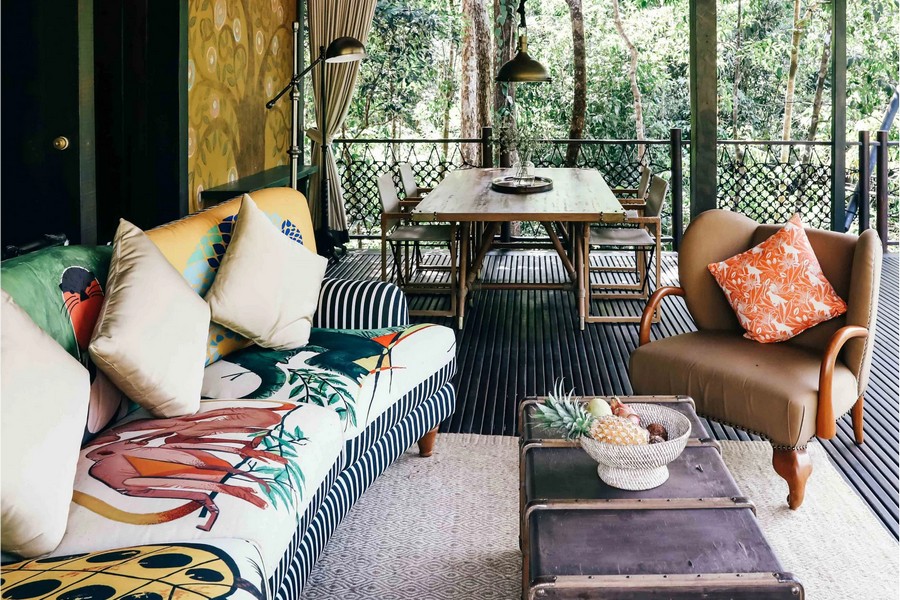
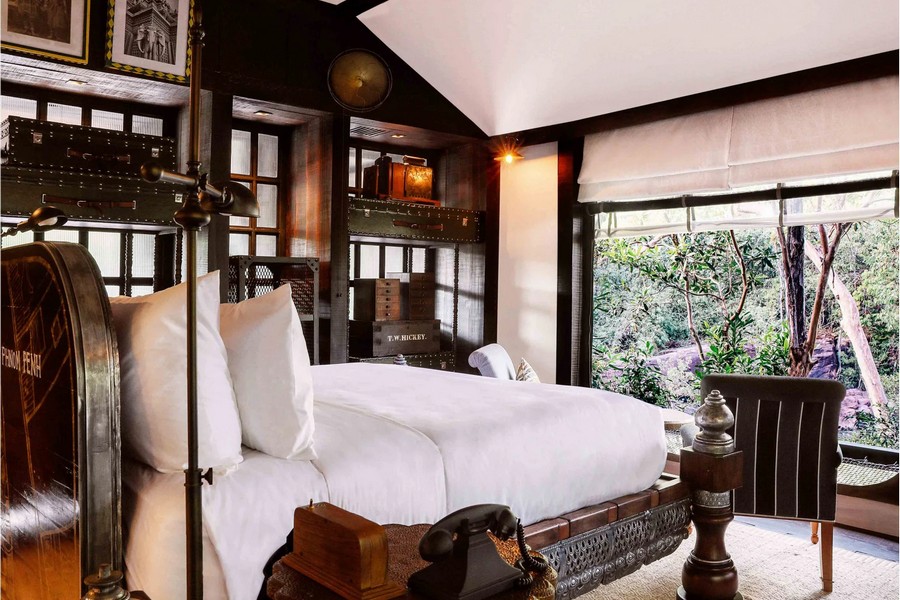
Accommodations follow the river’s rhythm. Only fifteen safari-style tents sit along a 1.5-kilometer stretch punctuated by cascades and quickwater, each placement chosen slowly over years to honor the valley’s contours. Space is generous from the outset—around 100 square meters even in the most intimate tents—and the categories speak to their setting: Wild, Waterfall, and a two-bedroom option for families and friends. Inside, the spirit is vintage-expedition with a modern wink: hand-hewn Khmer wood beds, canopied ceilings, a gleam of brass and gold, playful pops of color, and lighting that feels borrowed from a bygone atelier. The most revelatory feature, however, is the boundary that isn’t there. Tent walls fold back entirely, turning living rooms into verandas and verandas into front-row seats on the jungle. Private terraces frame boulder-strewn channels; deep outdoor tubs make unhurried ritual of bathing to the music of the forest at dusk.
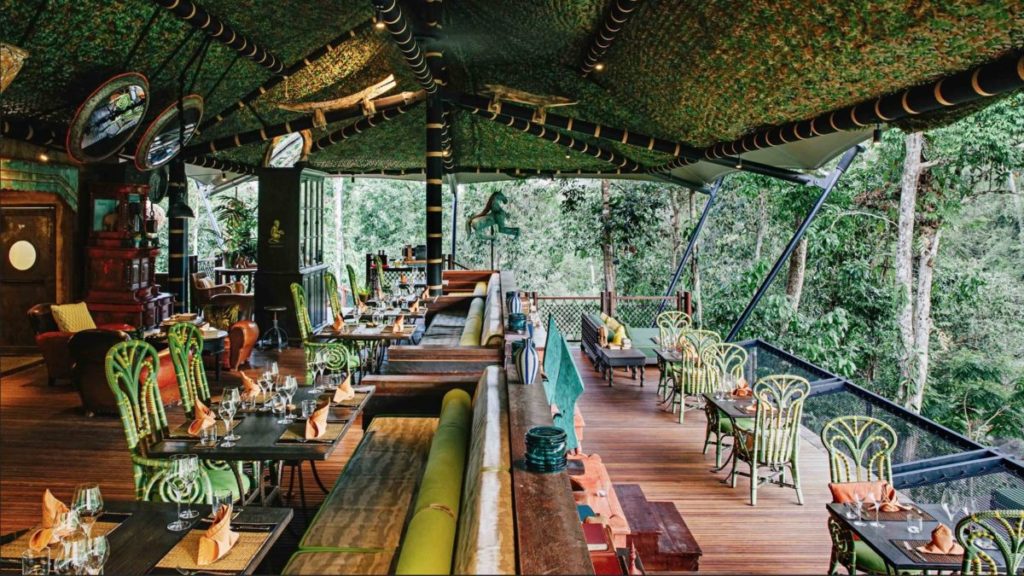

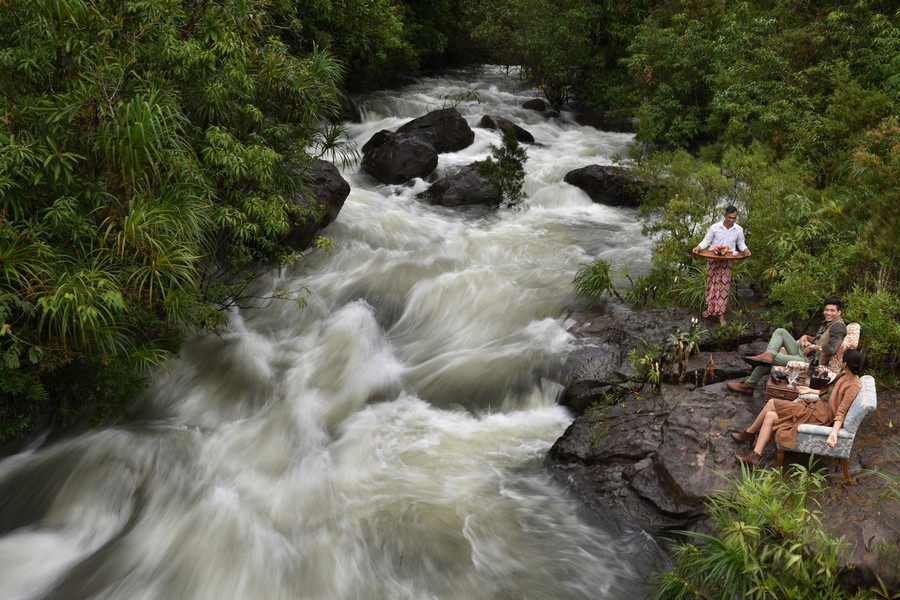
Dining is a love letter to place. Each afternoon, gardeners and chefs fan out with baskets and quiet intent, foraging along streambanks and beneath liana-wrapped branches for what the jungle is ready to share. The haul changes with mood and season—wild greens and mushrooms, bamboo hearts, nuts, waterlilies, river crabs, and fruits whose perfume alone tells you you’re far from the ordinary. At the Waterfall Restaurant, menus evolve daily, weaving foraged bounty with produce and eggs from the property’s gardens. Mornings might begin with generous breakfasts that linger into conversation; lunches become picnics beside a pool of still water; and evenings gather into multi-course stories that nod to global technique while staying rooted in the terroir of rainforest and river. When the light goes liquid, head to the Landing Zone Bar where sundowners are served on the rocks—literally—above a churning eddy. It is as elemental and elegant as cocktail hour gets.

Wellness unfolds at a different tempo. The Boulders Spa, tucked among massive stones softened by moss and time, draws on Khmer traditions to restore what urban life erodes. Treatments are unhurried and intentionally simple—an antidote to the property’s adrenaline highs and an intimate echo of the landscape’s calm. A petite gym and a cool, inviting swimming pool are there when routine beckons, but at Shinta Mani Wild, movement is mostly a conversation with nature. Take a pontoon up a mangrove channel and let the scene slide by like a slow-motion film; slip a kayak into the river and navigate between granite shoulders; cycle forest tracks scented with resin and damp earth. For those who want to go deeper, join rangers on anti-poaching patrols, learn the quiet science of a butterfly hatchery, or trek into the green cathedral with eyes and ears open. The “amenities” here are not contained in walls; they’re measured in encounters and revelations.
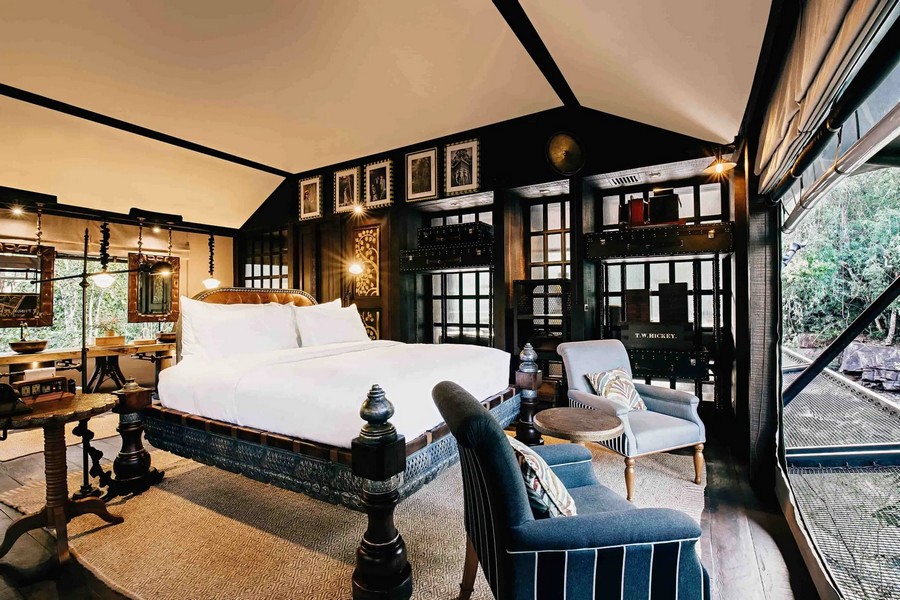
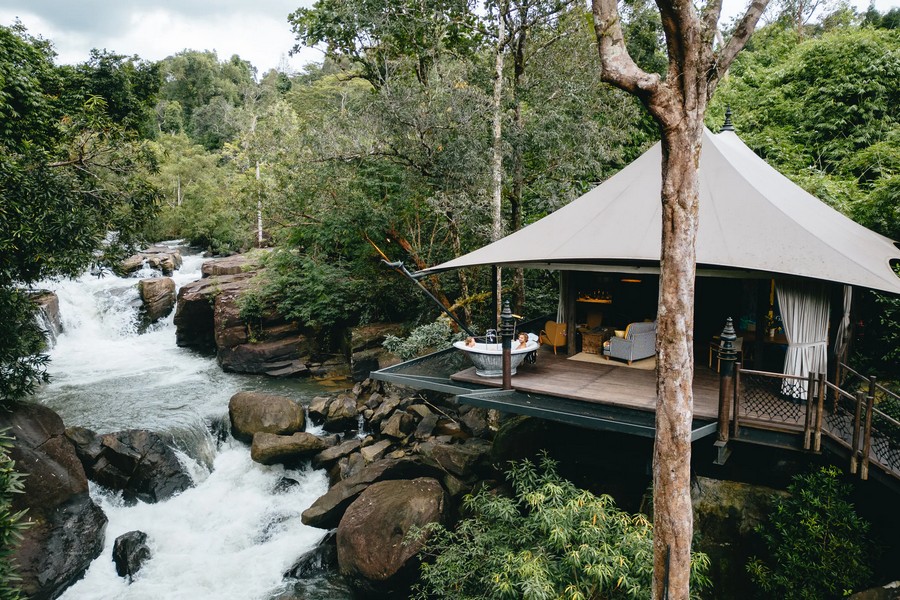
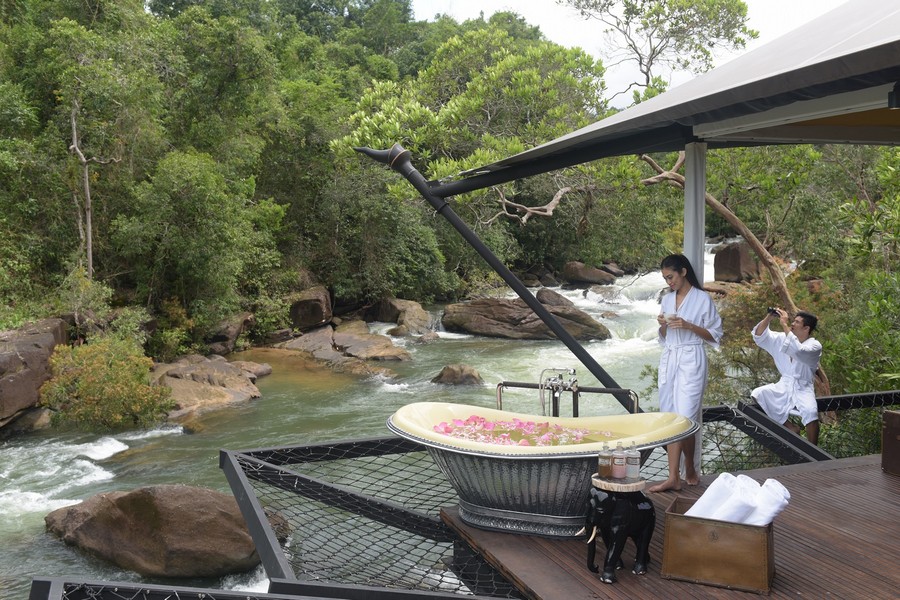
Location is everything, and Shinta Mani Wild sits at a powerful crossroads. It shares its neighborhood with three of Cambodia’s vital protected areas—Kirirom, Cardamom, and Bokor—an arc of biodiversity that shelters endangered species and intact ecosystems rare in Southeast Asia. The seclusion is real, yet access is straightforward: roughly four hours by road from Phnom Penh, about three from Sihanoukville, with the final approach delivering the kind of sensory shift you cannot manufacture. One minute highway; the next, a world that feels a century away.
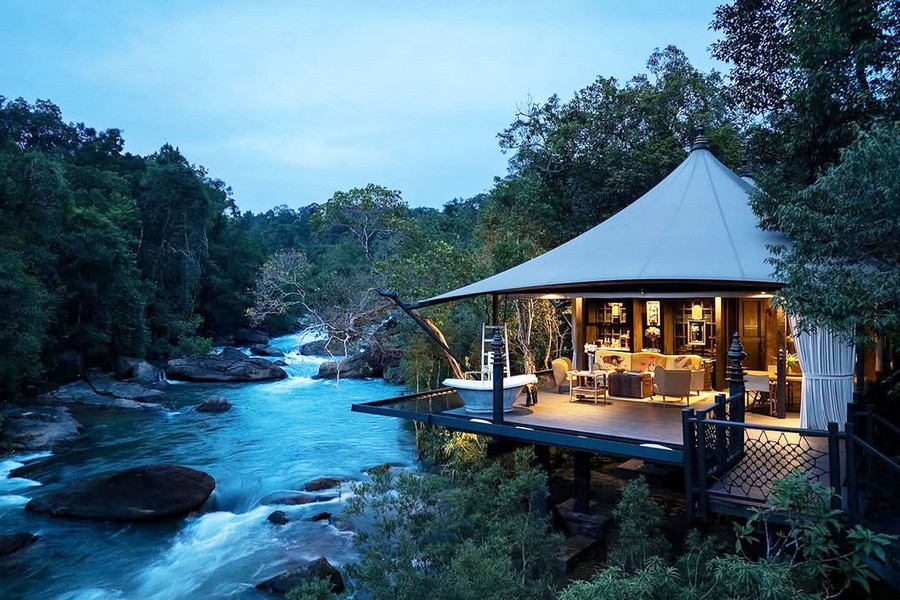
The creative force behind it all is Bill Bensley, the illustrious architect-designer whose imagination has redrawn hospitality across the region. Here, rather than impose a signature, he listened to the site. He saw a valley threatened by poaching, mining, and logging—and envisioned a lodge that could safeguard the land while unlocking livelihoods for people who live nearby. From that seed grew not only a design narrative, but an ethic. The property’s foraging program engages local communities (including former loggers) in work that flows from stewardship. The broader Shinta Mani ethos, shaped in part by a hospitality school that opens doors for those with limited opportunity, threads through every decision. The result is luxury that does not apologize for its pleasures, because those pleasures are harnessed to protect place and empower people.
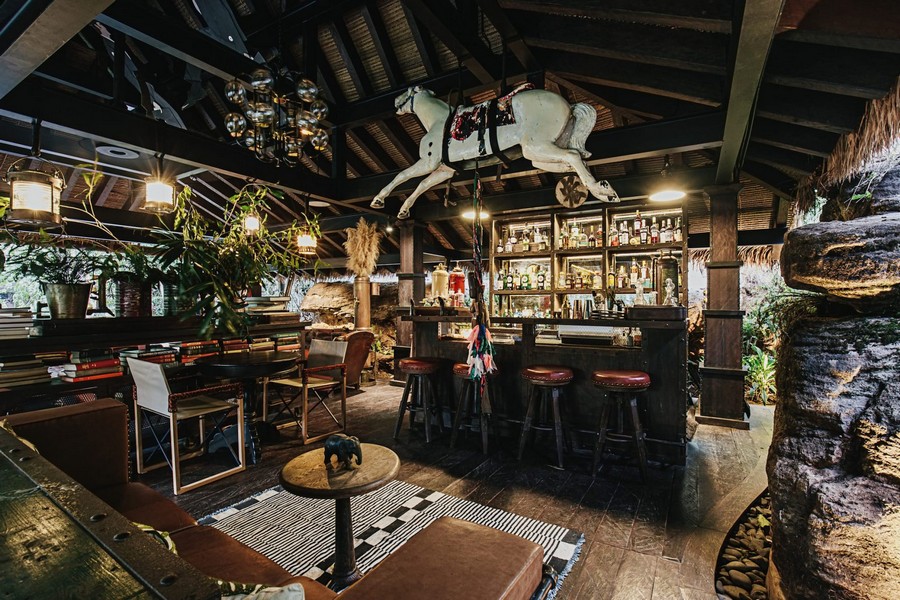
Design here tells stories rather than merely setting scenes. A retro trunk becomes a minibar of curiosities; a vintage fan whirs above a writing desk that seems to await your field notes; a length of rope, a lantern, a leather-bound journal—each detail persuades you to slow down and pay attention. The tents feel collected rather than decorated, more atelier than showroom, and that intimacy has a way of making time feel vast. Step outside and the choreography continues: plunge pools carved by the river itself, rocks warmed by afternoon sun, the hush before a kingfisher dives.

Shinta Mani Wild is both an escape and a stance. It satisfies the romance of adventure—zipline arrivals, river picnics, the sensory thrill of rain on canvas—while committing to a form of travel that leaves the world better than it found it. It’s a destination for couples who prefer constellations to chandeliers, for families who want their children to remember the sound of gibbons at dawn, for friends who collect experiences that can’t be boxed or brand-named. It is also, frankly, a joy for aesthetes: the way a tent’s canvas breathes at night, the patina of hand-rubbed wood, the color story of jungle greens amplified by brass and glass.

In the end, what makes this place exceptional is not the list of superlatives (though there are plenty), but the alignment of values. Here, the indulgence of a long soak under a sky stitched with stars is inseparable from the shelter those stars shine upon. Here, a cocktail at golden hour tastes better because the river below still runs wild. And here, a designer’s vision becomes a promise kept—to the forest, to its creatures, and to the communities that call it home.
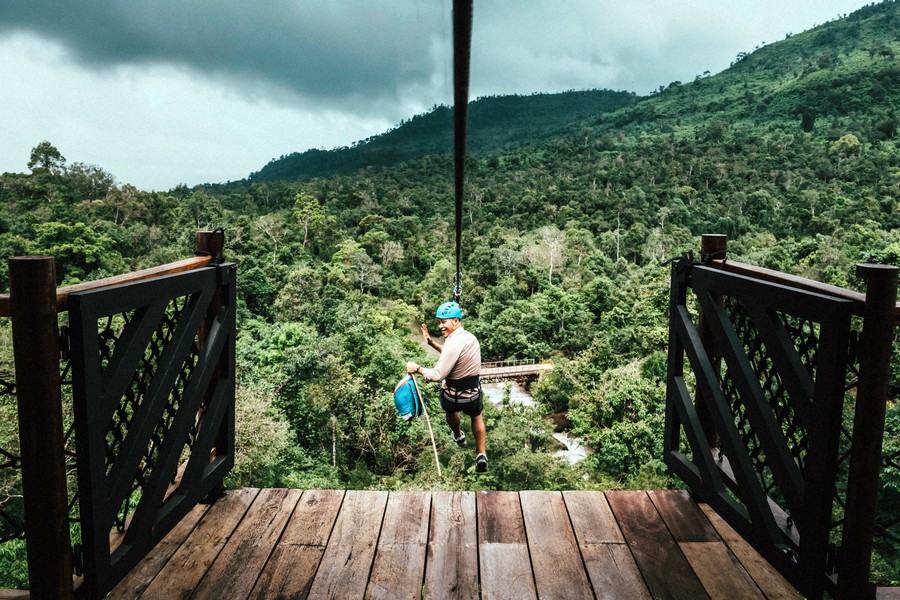
Shinta Mani Wild reminds us that true luxury is not an address; it is an approach. It’s the courage to do things the hard way—slowly, thoughtfully, with reverence for what cannot be replaced. For those ready to trade the predictable for the profound, this sanctuary at the edge of the Cardamoms offers something rare: an experience that stays with you long after you’ve flown the treetops and returned to the world below.
Shinta Mani Wild
Prey Praseth Village, Ou Bak Rothed Commune
Kampong Seila District
Preah Sihanouk Province, Cambodia
+855-96-919-0000


